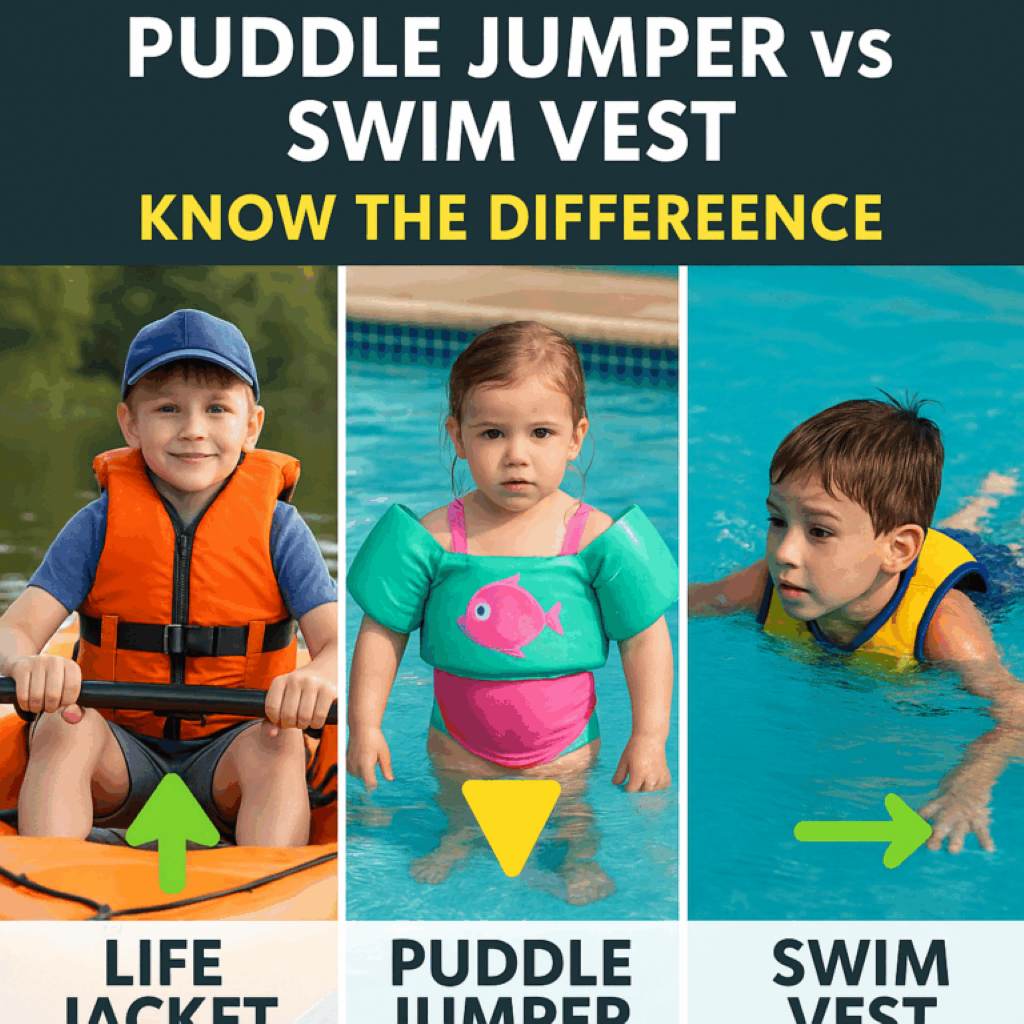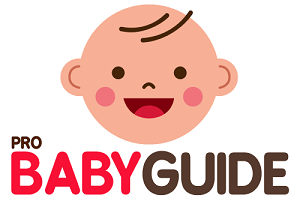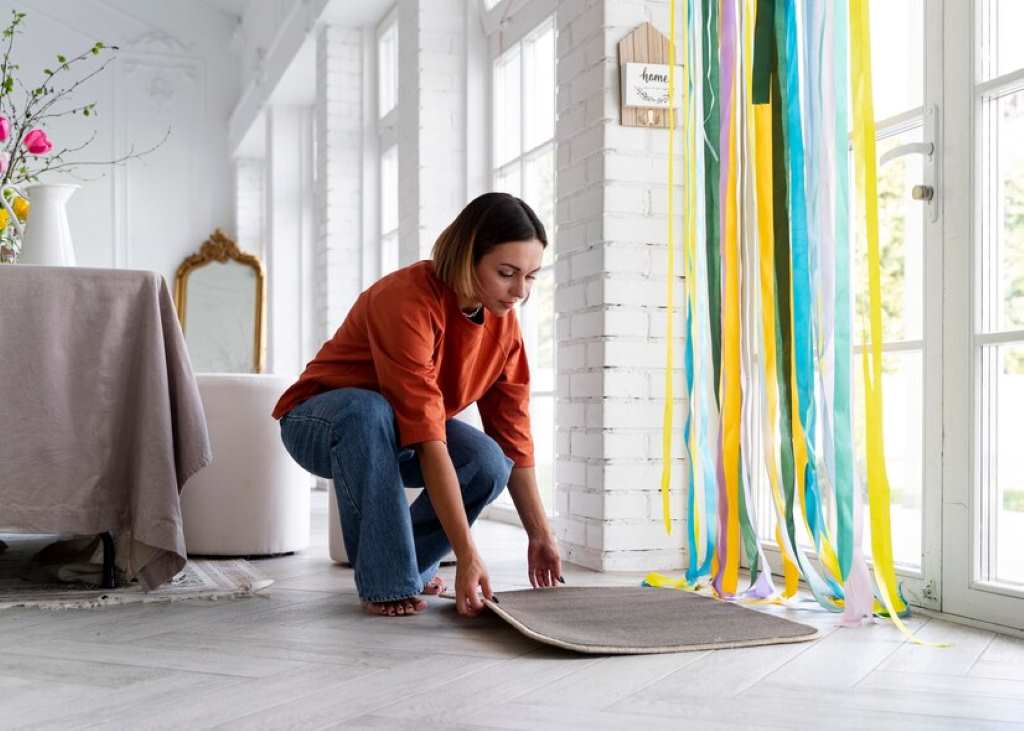Parents often worry about keeping kids safe around water. Every summer, families head to pools, beaches, and lakes for fun. Yet, dangers lurk if children lack proper protection. Swim vests and puddle jumpers both serve as flotation devices to help young ones stay afloat. These tools build confidence while preventing accidents. According to the CDC, drowning remains the leading cause of death for children ages 1-4 in the United States. In 2022, 461 kids in this group drowned, marking a 28% rise from 2019. Formal swimming lessons can cut drowning risk by 88% for toddlers. Therefore, picking the right aid matters greatly. This guide compares swim vests and puddle jumpers to help you decide wisely.
Understanding Swim Vests
Swim vests offer a simple way to support children in water. Manufacturers design them with foam panels that provide buoyancy. Kids wear them like regular vests, with armholes for free movement. This setup allows natural swimming motions. For instance, a child can paddle arms without restrictions. Many models come in bright colors to boost visibility.
Experts recommend checking for US Coast Guard approval. Approved swim vests meet strict safety standards. They ensure reliable flotation during emergencies. Besides, some include adjustable straps for a snug fit. Parents appreciate this feature because it prevents slipping. Additionally, swim vests suit various ages, from toddlers to older kids.
Research shows swim vests help develop swimming skills. Children feel secure, so they practice strokes more freely. However, they do not replace adult supervision. Always watch kids closely near water. Moreover, combine vests with swim lessons for better results. Instructors often use them in classes to teach basics.
Different types exist, like Type III swim vests. These provide comfort for active play and pair well with VIFUUR Kids Water Shoes for better grip and safety in the water. They keep the head above water but allow tilting, so users can swim comfortably. On the other hand, Type II versions offer more support for beginners. Each type fits specific needs.
Brands like Speedo Begin To Swim focus on quality. Their products include UV protection to shield skin from sun. This added benefit appeals to health-conscious parents. Furthermore, some vests have crotch straps for extra security. These prevent riding up during splashes.
What Makes Puddle Jumpers Unique
Puddle jumpers stand out as hybrid flotation devices. They combine arm bands with a chest float. This design creates a stable, hands-free option. Kids slip arms into floats connected by a chest piece. As a result, they maintain balance easily.
Stearns Kids Puddle Jumper Life Jackets lead the market. Their models feature fun prints like Lion print or Whale print. Children love Pink Leopard print or Lilac Hearts print. Such designs make wearing them exciting. Additionally, Sea Stars or Flower Hearts add variety.
The US Coast Guard approves many puddle jumpers. This certification ensures they meet safety guidelines. For example, they provide enough buoyancy for small bodies. Parents trust them for pool parties or beach trips. Moreover, they suit weights from 30 to 50 pounds typically.
Unlike traditional arm floaties, puddle jumpers reduce tipping. The chest connector stabilizes posture. Therefore, kids can play without constant adjustments. However, they limit arm movements slightly. This trade-off promotes safety over full freedom.
Experts from the National Drowning Prevention Alliance endorse them. They highlight how puddle jumpers encourage independence. Youngsters explore water confidently. Yet, remember to pair them with water safety awareness. Teach children about dangers early.

Key Differences Between Swim Vests and Puddle Jumpers
Swim vests and puddle jumpers differ in design primarily. Vests cover the torso with foam panels. Puddle jumpers focus on arms and chest. Consequently, vests allow better arm mobility.
Buoyancy levels vary too. Swim vests distribute floatation evenly. Puddle jumpers concentrate it around upper body. This setup affects how kids float. For active swimmers, vests prove ideal. Beginners might prefer puddle jumpers’ stability.
Fit and adjustability set them apart. Vests often have buckles and straps. Puddle jumpers use simple slip-on style. As a result, vests fit wider age ranges. Puddle jumpers target toddlers mostly.
Safety ratings play a role. Both can earn US Coast Guard stamps. However, Type III jackets suit swim vests better. Type II jackets align with some puddle jumpers. Check labels carefully.
Comfort influences choice. Vests feel like clothing. Puddle jumpers resemble toys. Kids might favor one over the other. Test both for preferences.
Pros and Cons of Swim Vests
Swim vests bring several advantages. They promote natural swimming techniques. Children learn to kick and stroke effectively. Additionally, they build confidence gradually.
Versatility shines through. Use them in pools, lakes, or oceans. Many models include head support pillows for infants. This feature aids younger users.
Durability stands out. Quality vests last multiple seasons. They resist wear from chlorine or salt. Parents save time replacing them.
However, cons exist. Some vests ride up without straps. This issue frustrates during play. Moreover, they require proper sizing. Ill-fitting ones reduce effectiveness.
Supervision remains essential. Vests do not guarantee safety alone. Always stay within arm’s reach.
Pros and Cons of Puddle Jumpers
Puddle jumpers excel in stability. They prevent forward tipping common with arm bands. Kids stay upright easily.
Ease of use appeals to busy parents. Slip them on quickly. No complex buckles needed. Furthermore, fun designs encourage wear.
Portability helps too. They pack small for travel. Take them to water parks or cruises.
Drawbacks include limited mobility. Arms get restricted slightly. This hinders advanced strokes. Additionally, they suit narrow weight ranges.
Over-reliance poses risks. Children might depend on them too much. Transition to independent swimming carefully.
When to Choose a Swim Vest
Opt for swim vests during structured activities. Swim schools like Goldfish Swim School recommend them. Instructors use vests to teach skills.
For older toddlers, vests work well. They allow practicing tread water. This skill builds endurance.
In heated pools, vests provide comfort. Kids move freely without chills. Moreover, for backyard pools, they offer reliable support.
Consider vests for recreational use. Families on Princess Cays cruises benefit. They enhance water activities safely.
If your child takes swimming classes, vests complement lessons. SafeSplash Swim School integrates them, and a Portable Diaper Changing Pad makes getting ready before and after class much easier. This approach fosters progress.
When Puddle Jumpers Shine
Puddle jumpers fit casual play best. Use them at water parks for splashes. Their stability prevents falls.
For beginners, they build initial confidence. Toddlers explore shallows securely. Additionally, in floatation blocks, they add fun.
During family outings, puddle jumpers simplify supervision. Parents relax slightly. Yet, watch closely always.
Brands like Swim Essentials offer themed options. Lilac Leopard or Blossom prints delight kids. This makes safety enjoyable.
In emergencies, they provide quick aid. Water emergency responses improve with them.
Safety Considerations for Both
Prioritize US Coast Guard Approved devices. These meet rigorous tests. The Coast Guard ensures reliability.
Combine with water safety instructor guidance. Certified teachers spot issues. They teach lifesaving skills effectively.
Avoid water wings alone. These deflate easily. Instead, choose solid flotation.
Monitor for wear. Replace damaged items promptly. Safety loops help secure fits.
Educate on survival techniques. Teach floating basics early. This knowledge saves lives.
The Role of Swimming Lessons
Swimming lessons transform water safety. They equip kids with essential skills. For example, learning to tread water builds stamina.
Programs like Sunsational Swim School focus on fun. Instructors make classes engaging. As a result, children retain techniques better.
Research confirms benefits. An 88% drowning risk drop occurs with lessons. Parents see confidence soar.
Start early. Even infants benefit from basics. Progress to advanced swim instructor sessions.
Combine lessons with aids. Use swim vests during practice. This reinforces learning.
Alternatives to Swim Vests and Puddle Jumpers
Life jackets provide robust protection. Type I suits offshore use. They turn users face-up automatically.
Personal Flotation Devices vary widely. Type IV acts as throwable aids. Use them on boats.
Swim undershirts offer subtle buoyancy. They pair with lessons nicely.
Floatation devices like swimming arm bands assist beginners. However, supervise closely.
Consider swim aid hybrids. Paddle Pal Life Jacket combines features.
Integrating with Water Activities
Water activities enrich family time. Use aids in backyard pools safely. They prevent accidents during play.
On cruises, like River Cruising, pack puddle jumpers. They fit small spaces.
At West Chester Area YMCA, lessons incorporate vests. This builds community skills.
For Michael Phelps fans, emulate his techniques. Aids help mimic pros.
In Cruise Critic discussions, parents share tips. Learn from experiences.
Common Myths Debunked
Many believe aids make kids drown-proof. Reality differs. Supervision stays key.
Another myth: All devices equal safety. Only approved ones do.
Some think lessons unnecessary with aids. Studies prove otherwise.
Puddle jumpers restrict growth, say critics. Proper use avoids this.
Vests hinder movement, claim others. Quality ones enhance it.
Parental Tips for Selection
Assess child’s age first. Toddlers need more support.
Test fit in stores. Ensure comfort.
Read reviews from Birth Club forums. Real experiences guide.
Check Community Guidelines for advice. They offer insights.
Consider zodiac sign for fun. Playful choices engage kids.
Enhancing Water Safety Awareness
Water safety awareness saves lives. Teach rules early.
Use CDC schedule for checkups. Health ties to safety.
Diaper brand choices affect comfort. Dry kids play better.
Nesting personality influences preparation. Plan ahead.
Cruise Conversations spark ideas. Share stories.
Exploring Swim Schools
Swim schools accelerate learning. Goldfish Swim School leads with fun.
Their heated pools comfort beginners.
Instructors focus on swimming skills.
SafeSplash Swim School emphasizes techniques.
Enroll for consistent progress.
Advanced Options and Features
Some aids include UV protection. Shield skin during play.
Crotch straps secure fits.
Head support pillows aid infants.
Recreational and travel use suits portable designs.
Type III Childs PFD offers specifics.
Case Studies from Real Families
One family used puddle jumpers at beaches. Kids played safely.
Another chose swim vests for lessons. Progress came quickly.
During cruises, aids prevented scares.
Backyard pools saw fewer worries.
Water parks became favorites.
Statistics Reinforcing Choices
Drowning stats alarm parents. CDC reports lead causes.
Lessons reduce risks dramatically.
Coast Guard approvals build trust.
User counts grow with awareness.
Frequency of use matters.
Transitioning to Independence
Gradually remove aids. Build skills first.
Encourage solo floats.
Celebrate milestones.
Monitor progress.
Reward efforts.
Community Resources
Join Australian & New Zealand Cruisers groups. Share tips.
North American Homeports offer local advice.
UK Cruising forums discuss safety.
Canadian Cruisers provide insights.
ROLL CALLS connect families.
Future Trends in Flotation Devices
Innovations improve designs. Smarter materials emerge.
Tech integrates monitoring.
Sustainability focuses grow.
Customization rises.
Global standards unify.
Conclusion
Swim vests and puddle jumpers both enhance child safety in water. Vests offer mobility for learning swimmers. Puddle jumpers provide stability for beginners. Choose based on your child’s needs and activities. Always prioritize US Coast Guard approved options. Combine with swimming lessons for best results. Remember, no device replaces vigilant supervision. Equip your family wisely to enjoy water adventures worry-free. Start by assessing your child’s skill level today and pick the right aid to boost their confidence.
FAQs
What Is the Main Difference Between a Swim Vest and a Puddle Jumper?
Swim vests cover the torso for even buoyancy and free arm movement. Puddle jumpers connect arm floats to a chest piece for added stability. This design helps prevent tipping but slightly limits strokes.
Are Swim Vests and Puddle Jumpers US Coast Guard Approved?
Many models earn approval if they meet standards. Check labels for Type II or Type III ratings. Approved devices ensure reliable performance in water.
Can Children Learn to Swim While Wearing These Devices?
Yes, but they aid practice rather than teach alone. Pair them with formal lessons. Instructors guide proper techniques for independence.
What Age Group Suits Puddle Jumpers Best?
Toddlers aged 2-5 benefit most. They fit weights around 30-50 pounds. Older kids might outgrow the stability focus.
How Do I Maintain These Flotation Devices?
Rinse after use to remove chlorine or salt. Store dry and away from sun. Inspect for damage regularly to ensure safety.



